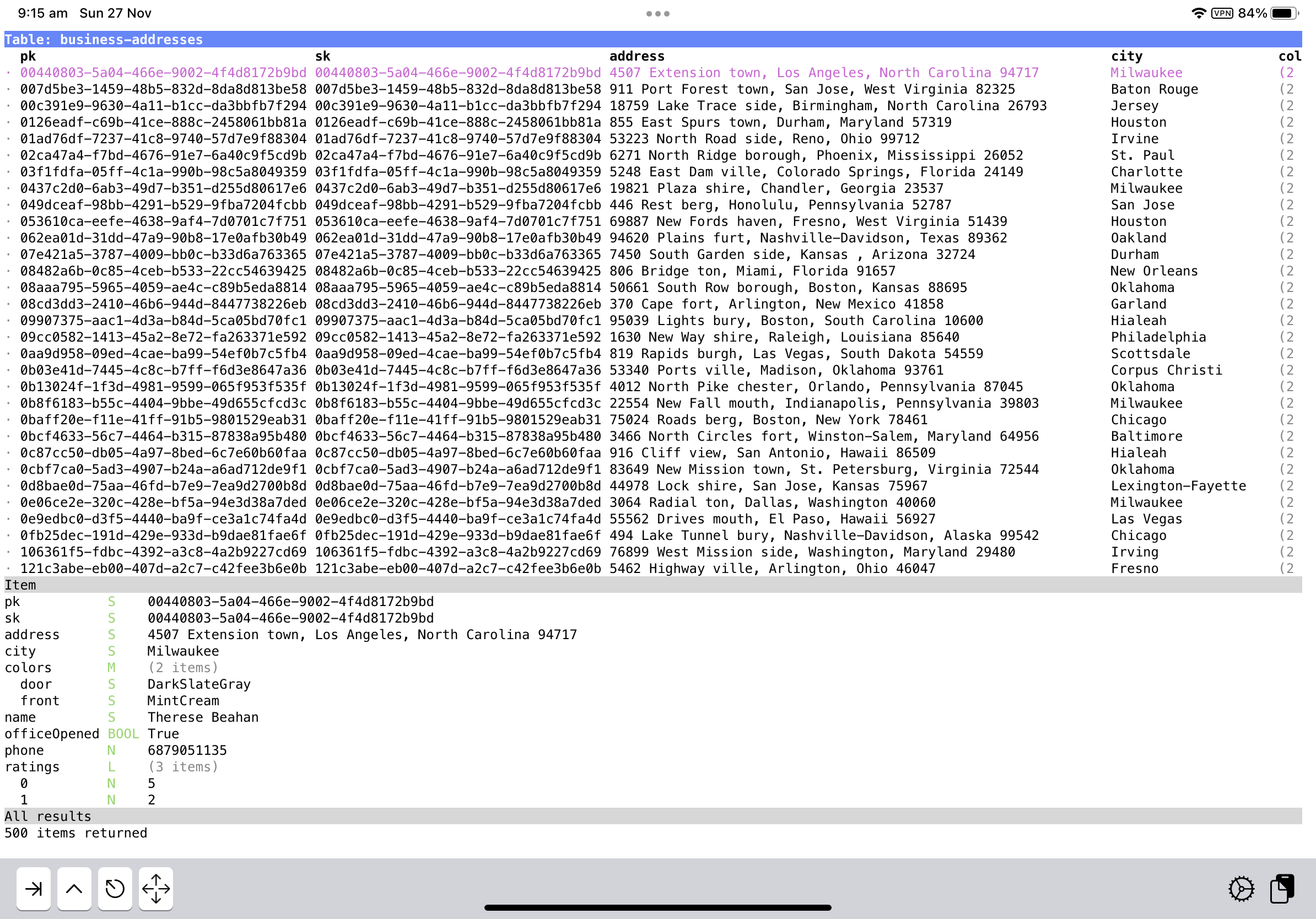Dynamo-Browse Running With iSH
Bit of a fun one today. After thinking about how one could go about setting up a small dev environment on the iPad, I remembered that I actually had iSH installed. I’ve had for a while but I’ve never really used it since I never installed tools that would be particularly useful. Thinking about what tools I could install, I was curious as to whether Dynamo-Browse could run on it. I guess if Dynamo-Browse was a simple CLI tool that does something and produces some output, it wouldn’t be to difficult to achieve this. But I don’t think I’d be exaggerating if I said Dynamo-Browse is a bit more sophisticated than your run-of-the-mill CLI tool. Part of this is finding out not only whether building it was possible, but whether it will run well.
Answering the first question involves determining which build settings to use to actually produce a binary that worked. Dynamo-Browse is a Go app, and Go has some pretty decent cross-compiling facilities so I had no doubt that such settings existed. My first thought was a Darwin ARM binary since that’s the OS and architecture of the iPad. But one of the features of iSH is that it actually converts the binary through a JIT before it runs it. And it turns out, after poking around a few of the included binaries using file, that iSH expects binaries to be ELF 32-bit Linux binaries.
Thus, setting GOOS to linux and GOARCH to 386 will produced a binary that would run in iSH:
GOOS=linux GOARCH=386 go build -o dynamo-browse-linux ./cmd/dynamo-browse/
After uploading it to the iPad using Airdrop and launching in in iSH, success!

So, is runs; but does is run well? Well, sadly no. Loading and scanning the table worked okay, but doing anything in the UI was an exercise in frustration. It takes about two seconds for the key press to be recognised and to move the selected row up or down. I’m not sure what the cause of this is but I suspect it’s the screen redrawing logic. There’s a lot of string manipulation involved which is not the most memory efficient. I’m wondering if building the app using TinyGo would improve things.
But even so, I’m reasonably impress that this worked at all. Whether it will mean that I’ll be using iSH more often for random tools I build remains to be seen, but at least the possibility is there.
Update: While watching a re:Invent session on how a company moved from Intel to ARM, they mentioned a massive hit to performance around a function that calculates the rune length of a Unicode character. This is something that this application is constantly doing in order to layout the elements on the screen. So I’m wondering if this utility function could be the cause of the slowdown.
Update 2: Ok, after thinking about this more, I think the last update makes no sense. For one thing, the binary iSH is running is an Intel one, and although iSH is interpreting it, I can’t imagine the slowdowns here are a result of the compiled binary. For another, both Intel and ARM (M1) builds of Dynamo-Browse work perfectly well on desktops and laptops (at least on MacOS systems). So the reason for the slowdown must be something else.